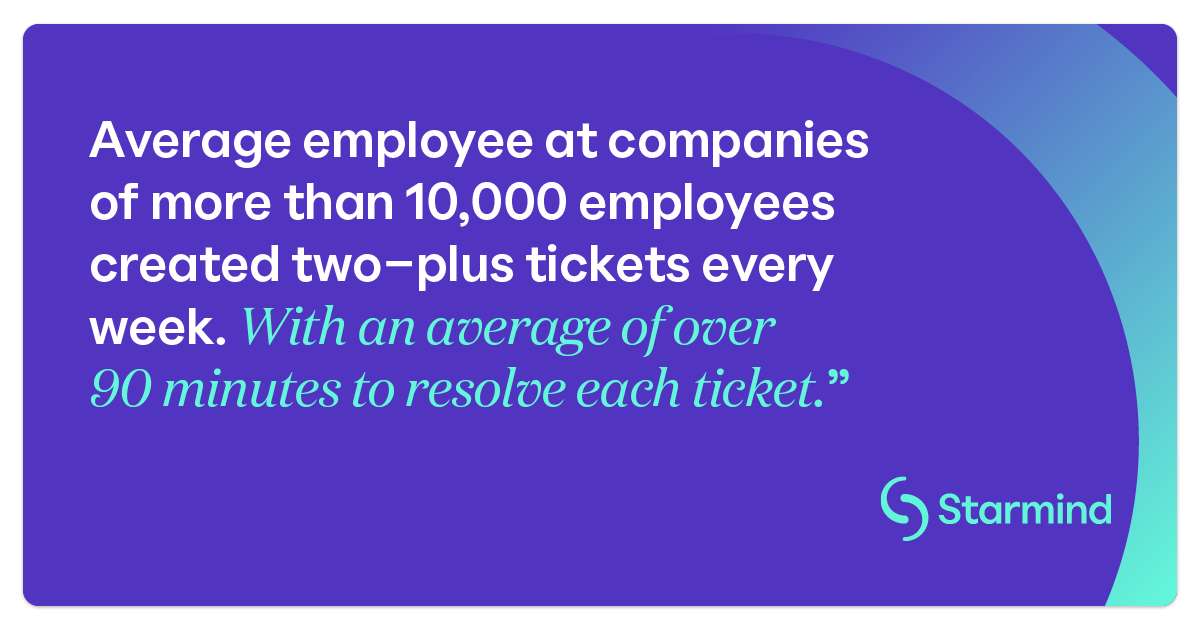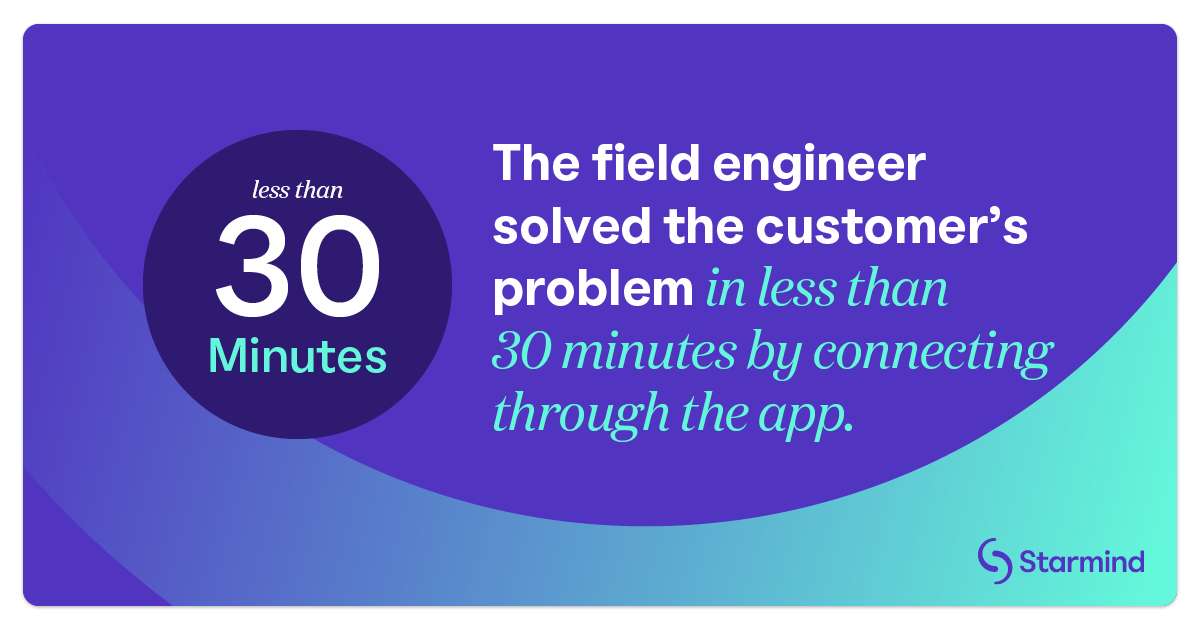Contents
Most people like solving problems themselves, but knowing you can turn to a service desk for help can be a lifesaver. Whether onboarding new employees, deploying systems or resolving critical business issues, your service desk fills multiple roles. By following service desk best practices, your teams can access knowledge and self-resolve many of their issues, saving time for your service desk to dedicate to resolving other technical issues.
When your service desk can operate efficiently, teams aren’t left waiting for answers to their problems. You can reduce the time and cost associated with troubleshooting and resolving common issues while empowering subject matter experts to solve more complex issues.
Regardless of whether your enterprise utilizes a help desk, service desk or a combination of the two, we can help you streamline the service desk ticket-handling process so your teams can quickly find support and get back to work.
Defining Help Desk Vs. Service Desk
While the terms are often used interchangeably, many organizations differentiate between help desks and service desks. It’s also important to note that help and service desks are components of IT service management, which oversees the end-to-end delivery of IT services to employees or customers.
Help desks, as their name implies, were created to focus on troubleshooting and resolving IT issues. While many help desks offer more extensive services, some companies also have service desks. These are customer-centric environments focusing on customer needs rather than incident response.
Important Help Desk Best Practices
Implement the Right Help Desk Software
You can have the right team and strategy, but ineffective ticket management software means your company will never reach optimal performance. Before buying, review the capabilities and features of any ticket management system you’re considering. Ensure the vendor can meet your current needs while scaling with your business.
Look for valuable features such as an intuitive interface, automated services, case management and collaboration tools, and support for multiple languages and channels. The best platforms also offer a knowledge base and self-service options, allowing employees to find support and resolve issues independently. Up to 80% of internal tickets are based on standard, repeatable questions. When answers and documentation related to these questions can be found easily, employees are less likely to need additional assistance.
Create a Knowledge Platform
A modern knowledge base and strategy can streamline your help and service desks and empower your teams to resolve issues independently.
Enterprise organizations deal with vast amounts of data and documentation, often spread across departments and systems. This knowledge can be difficult to access and organize, and is often lost over time. This also leads to excessive time and money wasted from employees searching for answers they may not find. At companies with more than 1,000 employees, this can mean more than $1 million lost every month due to inaccessible knowledge. Creating a documented knowledge repository will not be enough to fix your knowledge gaps. In order to optimize your team's effectiveness and reduce ticket volumes, you should consider using a knowledge platform that quickly connects users to tacit and inaccessible knowledge in real time.
Minimize Ticket Volume
Long ticket queues are common in many organizations. This creates delays, frustrated employees and customers, and missed revenue opportunities.
The most effective way to reduce ticket volume is by making it easier for employees and customers to access the information and resources they need. When employees, for example, are empowered to self-resolve issues, they’re less likely to open tickets. Preventing tickets is a surefire way to reduce lengthy ticket queues. SwissRe is a great example of reducing the need for support tickets by improving employees’ access to knowledge. By consolidating the access of more than 300 corporate services on a self-service portal with Starmind integration, the company was able to reduce its IT support ticket volume by 12% in the first year.
Accelerate Time-to-Resolution
With a lower volume of requests, you can empower service teams to better resolve the tickets that do arise. Assign subject matter experts to oversee tickets related to specific topics and automatically assign those requests. By providing this level of access to employees, your teams can find the most relevant and accurate information quickly.
Automate Help Desk Processes
A recent Starmind survey shows that the average employee at companies of more than 10,000 employees created two-plus tickets every week. With an average of over 90 minutes to resolve each ticket, the lost time and costs quickly add up.
Our research also indicates that nearly one-third of those tickets didn’t need to be filed, in theory, because a documented answer already existed. When employees ask standard, repeatable questions, consider how automation can deliver accurate answers while saving time for employees to focus on unique or urgent issues. Look for opportunities to streamline these requests, such as automatically suggesting information pulled from a knowledge base.
Automated workflows in other areas, such as onboarding, can decrease delivery time, reduce support costs and improve cost efficiency. Service desk automation can even improve your feedback process. One example is including surveys in your regular processes that are automatically created and distributed.  Offer Value to Customers
Offer Value to Customers
If your customers don’t see your product or service’s value, they won’t be engaged. Poor engagement hurts your performance and business outcomes. The good news is that you know exactly what your customers want — answers to their questions and help with problems. These customers are looking for your assistance and want issues resolved quickly so they can get back to what’s important to them.
Start by reviewing your performance to determine whether you consistently meet expectations and SLAs. Get feedback to see how your value is perceived by customers, even when those customers are other employees. In addition to feedback and performance, review engagement to find opportunities to demonstrate your value better.
Build a Collaborative Work Culture
Much like having the right systems and teams in place, high-level companies invest in the right training to empower teams. While you can’t expect employees to be experts in every subject, you can equip them with the skills they need to find answers.
For example, Swisscom sought to create a more collaborative, modern culture for its nearly 20,000 employees. Its goal was to break down internal silos, provide fast access to strategic knowledge and help employees learn about the products, services and systems they needed to understand for their work.
After partnering with Starmind, Swisscom developed a companywide tacit knowledge platform called “Ask the Brain.” This initiative made it easier for teams to find tens of thousands of unique answers and saved more than CHF 3 million per year through improved productivity.  Use Automated Ticketing Systems
Use Automated Ticketing Systems
Automation isn’t only for resolving predictable issues; it can also help save time by streamlining important processes. For example, by leveraging the power of artificial intelligence, you can automatically assign tickets to the most appropriate members of your team. You have subject matter experts that already have the knowledge and experience needed to solve many of your most complex problems, but finding and connecting with those people can be a challenge for employees.
By using automated ticketing systems, issues can be routed directly to subject matter experts based on their demonstrated knowledge. This means teams aren’t left guessing who is the best person to help, and others aren’t wasting their time trying to solve problems less efficiently. With an average support ticket cost of over $15, this can lead to substantial savings, even over a short period of time.
When teams have quick, easy access to knowledge, you’ll experience increased efficiency throughout the enterprise. There’s less time away from their core work, and employees can feel comfortable knowing exactly where to turn when they need assistance.
Follow Up on Resolved or Abandoned Cases
Not every case can be solved immediately, but unresolved issues shouldn’t be set aside and ignored. Establish processes that encourage your teams to follow up on cases so they’re resolved as quickly as possible.
Monitor the average time for resolving tickets and success rates. Collect feedback on how employees perceive workflows and their success rate with cases. When you identify abandoned cases, determine what actions or information are required to close them. See what resources can be devoted to updating and resolving those issues without sacrificing overall quality.
Offer Multiple Channels of Contact
Modern teams work across locations and access many systems, meaning each employee has unique needs and workflows. Likewise, your teams need multiple ways to ask for support. Many platforms offer desktop, mobile and web applications so employees can get in touch no matter where they are. Users expect service portals, phone and email support, live chat and other support offerings.
Your service desk solutions should offer convenience and access to answers. For example, Hitachi Energy partnered with Starmind to create a real-time knowledge network for its employees to easily access the information they need. When a field service engineer was dealing with a specific technical problem they couldn’t self-resolve, they accessed Starmind on their phone. The field engineer solved the customer’s problem in less than 30 minutes by connecting through the app.  Track Your Team’s Performance
Track Your Team’s Performance
You need a thorough understanding of your service desk team’s performance and the ability to access relevant, timely metrics in an easy-to-use way. Reporting features such as dashboards and analytics tools can highlight important metrics at a glance while letting users drill down for more details. Review key performance metrics to identify successes and areas for improvement.
Encourage Self-Service For Customers and Employees
When many of your service tickets already have documented answers, you have a great opportunity to encourage self-service. The key to offering self-service is to make it easy for users to find the information they need. The more knowledge they can access and share themselves, the less likely they are to file tickets. And employees who self-resolve issues gain knowledge they can use and share going forward.
Develop A Customer Portal
Developing a customer portal offers several advantages over one-to-one support through phone calls or email. Many customers want self-service options, yet many organizations don’t provide this level of support.
Whether your teams are helping internal or external customers, consider supplementing live support with an FAQ page or knowledge base. This allows users to search for available answers and documentation before submitting support requests.
Also, managing tickets through a portal allows easier tracking, updates and feedback. Tickets are in a central location for all relevant users to review, comment on and address, ensuring fast, high-quality responses.
Implement Service Level Agreements
Service level agreements (SLAs) are important to guide processes, measure performance and ensure tickets are resolved quickly. Your SLAs should include measurable, realistic timelines and goals.
Key components to consider when developing an SLA are the core features and services offered, support availability, contact channels, service standards, time frames and any exclusions or other conditions.
Collect Feedback
Measure performance from the perspective of your users, including your employees. One of the easiest ways to do this is by automating requests for feedback after a ticket is resolved.
Some employees are comfortable giving feedback, but others are less so. Make sure your feedback forms allow users to ask and answer questions anonymously. Offering the safety of anonymity can encourage engagement and build trust while revealing important information that helps the organization improve.
Optimizing your service desk service is ultimately about providing the best level of support while remaining efficient and cost-effective. This means having the right systems in place to give teams the help they need fast, such as a modern knowledge management system.
By organizing and centralizing information about common problems, solutions and processes, modern knowledge management helps service desk staff quickly and accurately resolve issues. This leads to faster resolution times and a better experience for all involved.
SwissRe, for example, wasn’t only able to reduce its support ticket volume by 12% by addressing its knowledge management strategy. The company also realized a 76% increase in the collective knowledge of the organization. This was obtained through substantial employee engagement, including a 175% increase in the number of questions asked and a 76% increase of re-used knowledge.
Modern knowledge management can help you identify and address recurring issues, prevent future problems and optimize your processes. Following these service desk best practices increases user satisfaction, reduces ticket volumes, improves resolution rates, and reduces delays and waste.
Discover more ways knowledge management enables service desk success. Reimagine service desk knowledge management for the enterprise.



